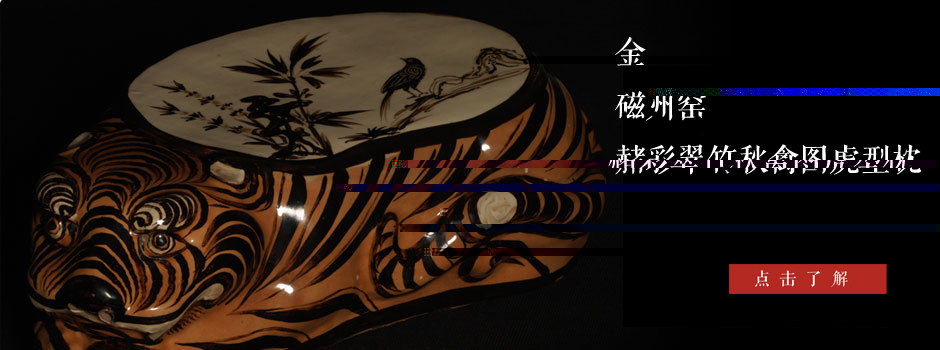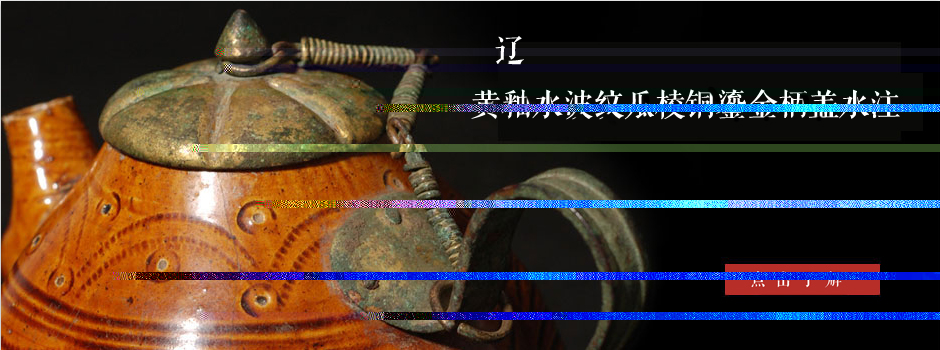- >> Company Profile
- >> President's Speech
- >> Brand Service
- >> Mission & Goals
- >> Value System
- >> Brand Construction
- >> Philosophy and Mode
Address: Room 614-616,China World Office 1, No.1 Jian Guo Men Wai Avenue, Beijing, P.R.C.
Tel:+86-10-65051177
Fax:+86-10-65058988
E-mail:soongs@zbkenuo.com
Home >> Show Items
Yellow-glazed twistable clay mold and Q wrist cushion of the Tang Dynasty / Green-glazed twistable clay mold and plum blossom Q wrist cushion of the Tang Dynasty
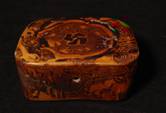 |
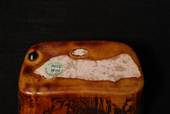 |
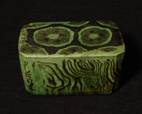 |
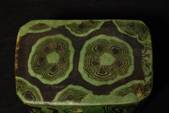 |
Tang Dynasty is a period full of originality and vigor not only in pure arts such as poetry, music and architecture, but also in the industrial arts such as ceramics and metalwork, etc. In terms of the history of ancient ceramics in China, Tang Dynasty was a transitional period, when the ceramics firing and making technology as well as the process had been developed to a great extent. Many new types were made in the kilns of different regions in the south and north of China. Of these, the most famous could be Tang tricolor, vitreous enamel of variegation and ware of twistable clay mold. The appearance of ware of twistable clay mold is a combination of the romantic imagination of Tang people and their creativity. The wares of twistable clay mold, emerged and developed prosperously within a short period, had immediately become the art treasure in the ceramics history of China after its birth.
Twistable clay mold is made by mixing the clay mud of two different colors (or more than two) at interval, which shall then be cut into slices and pasted on the surface of ware clay mold as per the coarse or thread-like pattern out of the clay mold shaping. Specifically, twist the prepared clay materials into spaced mud scrolls and cut them into bars or slices as needed. Then trim it into full twistable clay mold by the way of embedding, scrambling and pressing through the mold and stick it with the bare clay mold (made in advance) to make facing twistable clay mold. After the trimming and glazing process, put it into the kiln to be fired for the finished product. Owing to the random combination, overlapping of twistable mud layers as well as the change of twisting method, the twisted patterns can produce many textures, such as chicken-wing texture, wooden texture, feather texture, flower-cluster pattern and flowing and floating pattern, etc. In production, the technical requirement is high. The expansion factor of these clays used must be consistent, which is to ensure that the ware is free from deformation or cracking in the process of drying, firing and production.
When being classified in details, the process of twistable clay mold consists of the following three: namely, fully twistable clay mold, main-part twistable clay mold and local twistable clay mold.
Fully twistable clay mold: This type of work is integrated to be one, and mostly in the form of wooden texture. The streak is flowing and varies greatly. It is usually made as the thin and small ware, such as cup, bowl and the tray of facing twistable clay mold. The porcelain pillow of yellow-glazed twistable clay mold is of this type.
Main-part twistable clay: The texture of this type of art work is the same as that of the ware of fully twistable clay mold, which is applied in the main part of the ware, such as the large-area belly of bowls, alms bowls and basins. However, the mouth edge or feet ring is connected to the body part of the twistable clay mold with the grayish white clay mold of single color.
Local twistable clay mold: This type of art work is made through the embedding process, that is, kneading the twistable clay mold into the clay bars of regular patterns such as flowers, flower clusters and diamond, then cut off the clay bars into several single slices and sheets and embed them on the surface of porcelain ware to be fired. This is to make the porcelain ware with patterns of local twistable clay mold. Such type of twistable porcelain ware can be seen from the “Flowery Pillow of Du Family” and flowery pillows of circular bead and rectangle shape in Shanghai Museum, green porcelain pillow of flower cluster in twistable clay mold unearthed in Ningbo and Buddhist relic box of flower cluster of twistable clay mold in the first year of “Emperor Xianping” in Henan Museum.
As for the origin of twistable clay mold, there are several stories according to the record in the literature of Tang Dynasty and some folklore: The ancient people used the burl with multiple variegations to make various wares. Their texture is coiled and tangled, which makes it natural for the patterns. In the Tang Dynasty, not only the refined scholars liked the elegance and delicacy of burl, but the nobilities used wares of burl as presents for each other. Therefore, there were burl wares that have been passed down, including “burl pillow, burl goblet and burl bed”. Tang people had absorbed the textural beauty of freely flowing burl, such as “mountains as barrier, waves overlapped and lightening by the fast movement of clouds”. In addition, it combines the beauty of patterns such as “cloudlet, round flower and pine scales” specific to ware with the painting like rhinoceros skin to develop the twistable clay mold of porcelain and twistable glazed wares. This has changed the decorative method of ceramics that mainly uses black, white and tricolor. The pattern of decoration “as spreading as Pu ceramics, as prosperous as hare hair, like fruits of crop seedling, as well as the glossy ganoderma roots” distributed on the gorgeous massy wares. It is more than one can take in and makes the ware of twistable clay mold the typical combination of art and practicality in the Tang Dynasty.
The other story goes like the following: The craftsmen of Tang Dynasty unintentionally mixed the bits and pieces of remaining materials such as clay mold and glaze in the process of producing various ceramics when they finish their work, then they noticed the natural and flowing texture of petuntse, which is extremely like the texture of marble and burl. When this is made into ceramic clay mold of different shapes, the contrast is striking, but very beautiful.
There is another story going as follows: It was influenced by the western glass wares; however, there were no such glass wares from all the trades and exchanged articles in the Silk Road of Tang Dynasty that have been unearthed or passed down. In addition, the double-color overlapped pattern in the western glass was no longer popular earlier in the Christian era; finally, one more story believes that it was influenced by the ware with painting like rhinoceros skin.
Since most effects of twistable clay mold are from the change of natural mechanism of porcelain clay, it is, to a certain extent, similar to the kiln-changes-the-glaze in the later era. Its artistic effect is far more than human’s control, therefore, ever-changing but invoking. The pattern of Tang Dynasty that has been seen can have the growth ring like that in the timber, feather in parallel, common pheasant tail feather in rows, flourishing plum blossom (as in the green-glazed porcelain pillow of this type), as cloud flowing and water running (as the yellow-glazed porcelain pillow of this type). None of it is isolated.
According to the available literature, the kilns that produced twistable clay mold include Gong County Kiln of Henan Province, Porcelain Village Kiln, Zibo, Shandong Province, Huangbao Kiln, Shanxi, Yue Kiln, Shanglin Lake, Cixi, Zhejiang Province and Huiyuan Kiln, In the Tang Dynasty, Henan was superabundant in products, developed in economy. Most kilns that produced twistable clay mold were located in Henan Province. Of these, the largest one would be Gong County Kiln which boasted the highest level of technology. The kiln site of Gong County Kiln is located in Xiaohuangye, Tiejianglu Village, Baisha River Town in Gong County. They mainly engaged in firing white porcelain, but also fired tricolored ceramics and porcelain wares of twistable clay mold as their auxiliaries.
Though the cost of the abundant petuntse and glaze materials used to make ware of twistable clay mold in Tang Dynasty is lower, the productivity of ceramic wares of twistable clay mold is not very good due to the difficulty of its making technique, high technical requirements, more complex process, the labor consumption and time consumption. As a result, it is rarer to keep any so far. Viewed from the global perspective of the glaze of clay mold and its process, the porcelain pillow of yellow-green twistable clay mold should be produced by Gong County Kiln, Henan Province. The similar one in China is only found in the collection of Beijing Palace titled “Pillow of twistable clay mold with yellow-glazed plum blossom patterns” (Picture 1). Another similar one is collected by Anhui Museum titled “yellow-glazed porcelain pillow” (Picture 2). The yellow-glazed and green-glazed pillow of twistable clay mold (Picture 4 and Picture 5) donated by the married couple Mr and Mrs Yang Yongde and collected by Guangzhou Museum of Southern Yue King’s Mausoleum. A green-glazed plum blossom pillow (Picture 4) is collected by Meiyuntang. A yellow-glazed porcelain pillow of twistable clay mold (Picture 6) is collected by Tokyo National Museum of Japan. It is a pity that the released picture is not very clear.
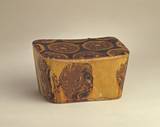
Picture 1 The pillow of twistable clay mold by Gong County Kiln in the Tang Dynasty Collected by Beijing Museum Height 8cm, length 12.5cm, width 8.8cm
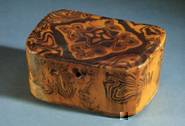
Picture 2 The yellow-glazed pillow of twistable clay mold unearthed in Hao County in 1955 and collected by Anhui Museum length 15.6 width 10.8cm
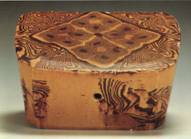
Picture 3 The yellow-glazed pillow of twistable clay mold by Gong County Kiln in Tang Dynasty porcelain pillow donated by the married couple Mr and Mrs Yang Yongde collected by Guangzhou Museum of Southern Yue King’s Mausoleum Height 7.4, length 15.6 width 10.6cm
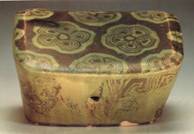
Picture 4 The green-glazed pillow of twistable clay mold by Gong County Kiln in Tang Dynasty Porcelain pillow donated by the married couple Mr and Mrs Yang Yongde collected by Guangzhou Museum of Southern Yue King’s Mausoleum Height 8.1, length 14.7, width 11.0 cm
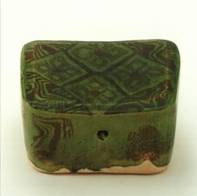
Picture 5 Collection of Ziyintang height 12.1cm Regina Krahl ‘Chinese Ceramics from the Meiyintang Collection’,Volume Three(I),p258.
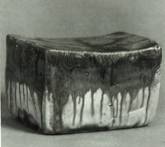
Picture 6 Collected by Tokyo National Museum Yellow-glazed pillow of twistable clay mold in Tang Dynasty Length 12.2, height 7.4, width 8.7cm Posted as a present by Jiangshou Mingyan
